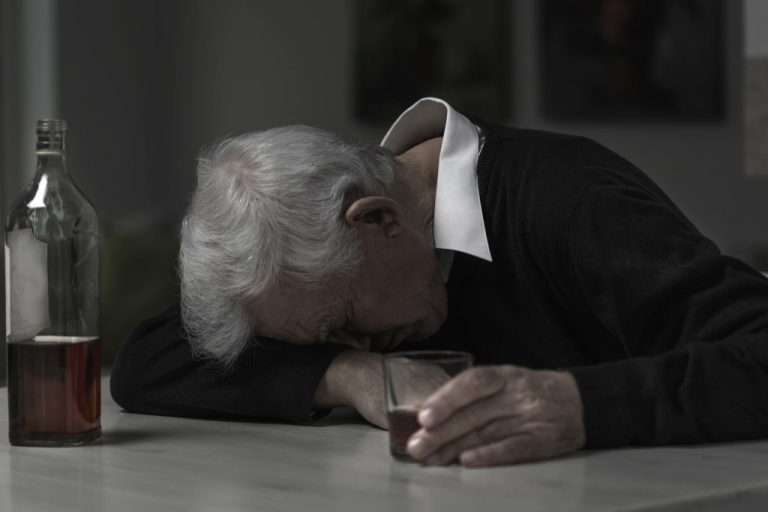Content
Social-networking sites such as Twitter, Instagram, and Facebook feature alcohol-related marketing. One study found that by 2012, there were more than 1,000 alcohol-related sites on Facebook alone (Nhean et al. 2014). Alcohol use increases with the number of online peer ties and greater peer density, a measure of interconnectedness in the social network (Cook et al. 2013). In the context of alcohol use, individuals are nested within their microsystem , which is nested itself within the larger community. Macrolevel factors, such as exposure to advertising, may influence family and peer network attitudes and norms, which ultimately affect individual attitudes and behaviors . There are numerous signs and symptoms when comparing social drinking vs problem drinking.

Rather, it reflects important social psychological reasons pertaining to when, where, and why a student consumes alcohol. Students entering college face great changes in their social environment. Typically, they are living away from home for the first time social drinking and drinking problem in their lives, and they are free from direct parental supervision and control. They are also faced with the challenges of making new friends and acquaintances, establishing new living arrangements, and negotiating their way around a college campus.
Association Between Social Context and Alcohol Abuse, Dependence, and Depression
Oar is a science-based platform that helps people drink less or stop drinking. Complete an online assessment and get connected with a medical provider who can determine if Naltrexone is right for you. In the U.S., the historical terms “alcoholism” and “alcoholic” are no longer used as an official diagnosis. Your call is free and confidential, and there is no pressure to commit. If it turns out that our program is not the right fit for you, we will do whatever we can to help you find a program that meets your needs. Our main goal is to help you along your recovery journey and get you the help you need. We are ready and waiting to answer your questions or concerns.
- Maybe you are concerned that your drinking is becoming a problem, or maybe someone close to you has shown concern about your drinking.
- Everyone should know the warning signs of alcoholism and not ignore when social drinking goes too far.
- It is the hope of AspenRidge to provide a safe environment for all members of a family to experience long-term sobriety and recovery.
- Treatment for addiction takes many forms and depends on the needs of the individual.
- It takes tremendous strength and courage to face alcohol abuse and alcoholism head on.
Problem drinkers may experience some health effects, but they can quit drinking on their own. They regularly experience problems in various aspects of life because of how much or how often they drink. While some people use the terms alcohol abuse and alcoholism interchangeably, these terms refer to two different alcohol use disorders. Alcoholism is a physical addiction, and alcohol abuse is a pattern of excessive drinking behavior, despite any negative consequences that may occur. Alcohol use and misuse account for 3.3 million deaths every year, or 6 percent of all deaths worldwide. The harmful effects of alcohol misuse are far reaching and range from individual health risks, morbidity, and mortality to consequences for family, friends, and the larger society.
What It’s Really Like To Parent When You Have ADHD
Binge drinking, which means having between 4 and 5 drinks within 2 hours, is considered a form of alcohol abuse. Social drinking rarely results in having more than one or two drinks per hour. If you or a loved one is concerned about your drinking, you may wonder what the difference of social drinking vs alcoholism is. Since alcohol is widely available at many different social events, such as parties, it can be difficult to understand how social drinking vs alcoholism differs. College campuses many times make alcohol a central roll in socializing. Likewise, many business networking events take place at bars or restaurants that serve alcohol. Future interventions should focus on multiple levels of societal environments, from the community to the individual level.
How do you tell someone they are drinking too much?
- 'I'm a bit worried about your drinking. '
- 'I want to talk to you about something: I feel that your drinking is causing you some problems. '
- 'You seem to be drinking more lately and I think it's having a bad effect on us. '
- 'The family cannot afford the money you spend on alcohol. '
But a family history or current family alcohol or drug abuse problems may influence the start of personal drinking problems. Sometimes a drinking problem is triggered by major life changes that cause depression, isolation, boredom, and loneliness. Both the volume of lifetime alcohol use and a combination of context, frequency of alcohol consumption and amount consumed per occasion increase the risk of the wide range of health and social harms.
Social Drinking: What Can Go Wrong?
There are a few telltale signs that you might need to adjust your approach to social drinking to semi or full sobriety. Finally, given the changing demographic landscape of the United States, including a larger and more diverse immigrant population, interventions and treatment options should also reflect the growing needs of certain groups. Alcohol education programs need to also address individual intent and motivations while offering personalized feedback and protective behavioral strategies (Patrick et al. 2014). Public health and treatment programs need to be culturally sensitive, paying particular attention to cultural factors such as ethnic identification and orientation. Some alcohol researchers have used multilevel approaches to distinguish among the causal effects of individual and neighborhood-level norms. If an individual lived in a neighborhood that frowns on binge drinking, that individual was less likely to drink, even if he or she believed it acceptable to do so. This was particularly true for women, suggesting gender norms around alcohol use may be a factor.
Enjoying the spirit of the holidays with fewer spirits — Kevin MD
Enjoying the spirit of the holidays with fewer spirits.
Posted: Thu, 08 Dec 2022 20:10:44 GMT [source]
This article reviews a few of the cultural and social influences on alcohol use and places individual alcohol use within the contexts and environments where people live and interact. It includes a discussion of macrolevel factors, such as advertising and marketing, immigration and discrimination factors, and how neighborhoods, families, and peers influence alcohol use. Specifically, the article describes how social and cultural contexts influence alcohol use/misuse and then explores future directions for alcohol research.
CDC’s Response to Excessive Alcohol Use
Cook SH, Bauermeister JA, Gordon-Messer D, Zimmerman MA. Online network influences on emerging adults’ alcohol and drug use. The built environment and alcohol consumption in urban neighborhoods. Ahern J, Galea S, Hubbard A, et al. “Culture of drinking” and individual problems with alcohol use. Windle M, Mun EY, Windle R. Adolescent-to-young adult heavy drinking trajectories and their prospective predictors. Paschall MJ. College attendance and risk-related driving behavior in a national sample of young adults. A social drinker indulges in alcohol on social occasions or as a way to socialize.

Alcohol is a toxic and psychoactive substance with dependence producing properties. In many of today’s societies, alcoholic beverages are a routine part of the social landscape for many in the population. This is particularly true for those in social environments with high visibility and societal influence, nationally and internationally, where alcohol frequently accompanies socializing. In this context, it is easy to overlook or discount the health and social damage caused or contributed to by drinking..
But you can probably consume more than two drinks per day and still drink responsibly. If you’re unsure about whether you’re a casual drinker or a problem drinker, consider cutting back on your alcohol intake or committing to sobriety. If you still want to drink casually, be sure to drink responsibly. You don’t have to be an alcoholic to have problems with alcohol. Problem drinkers don’t necessarily need to go to a residential rehab center to stop drinking.








